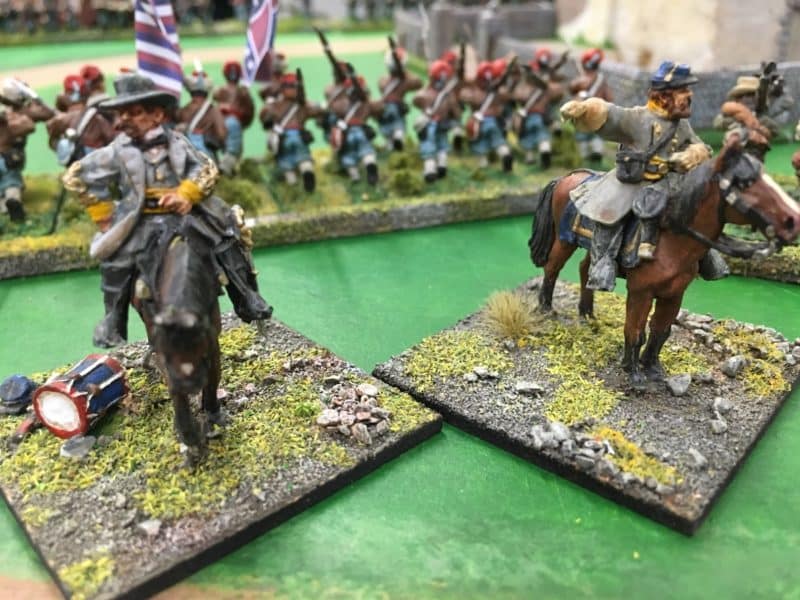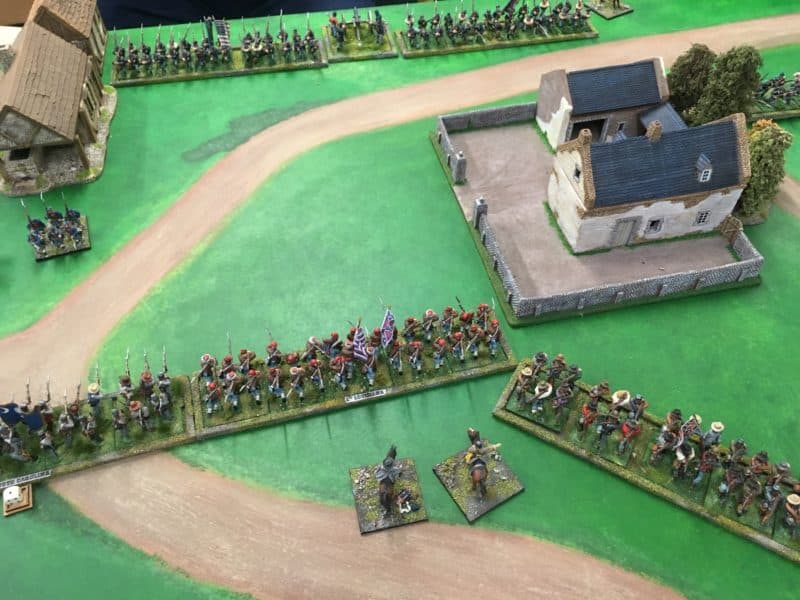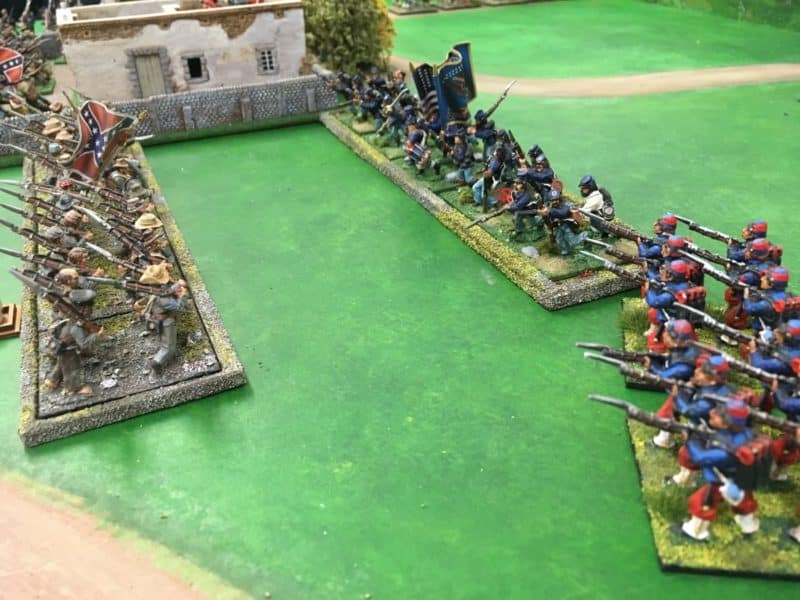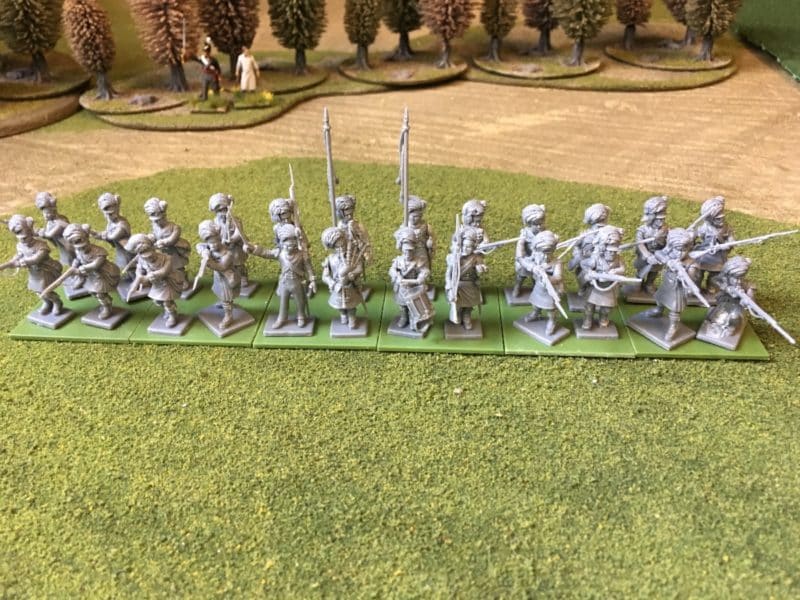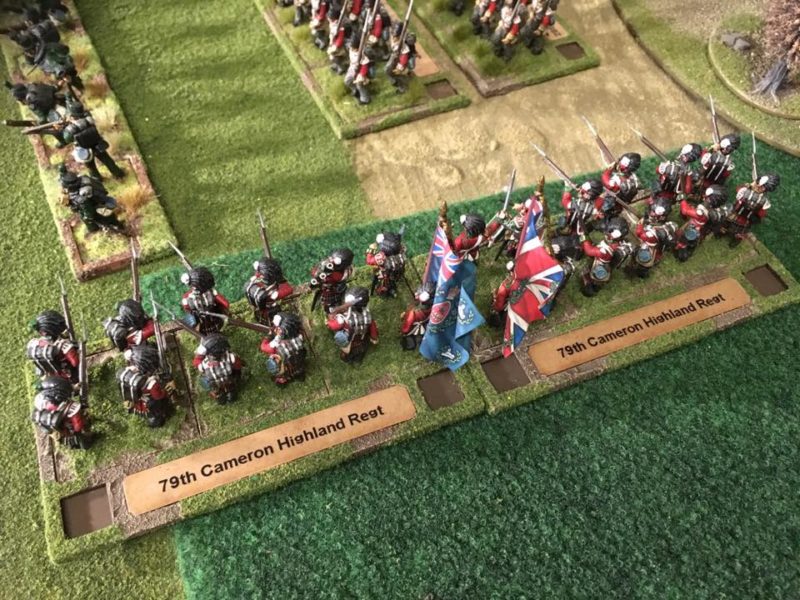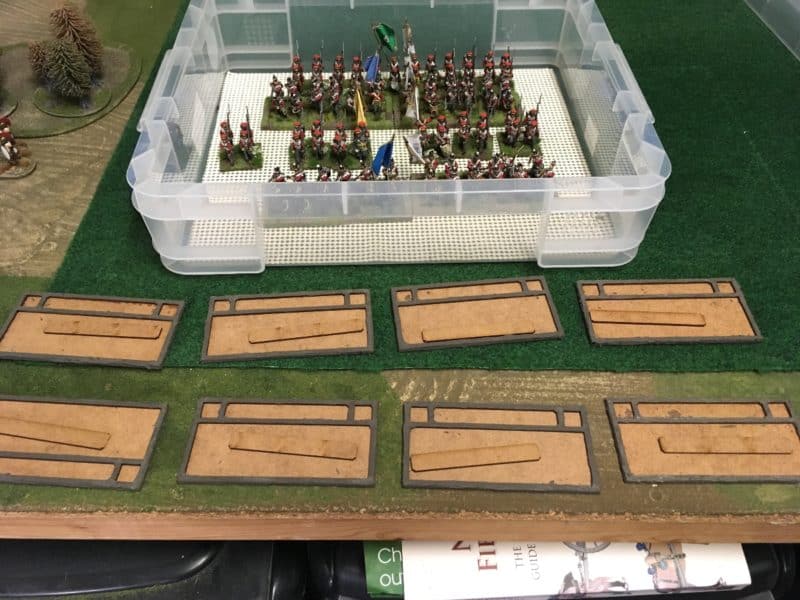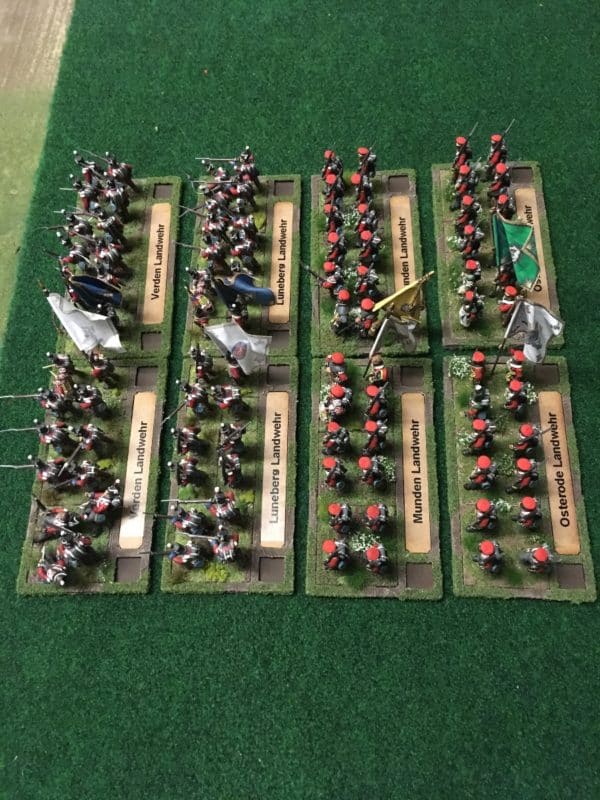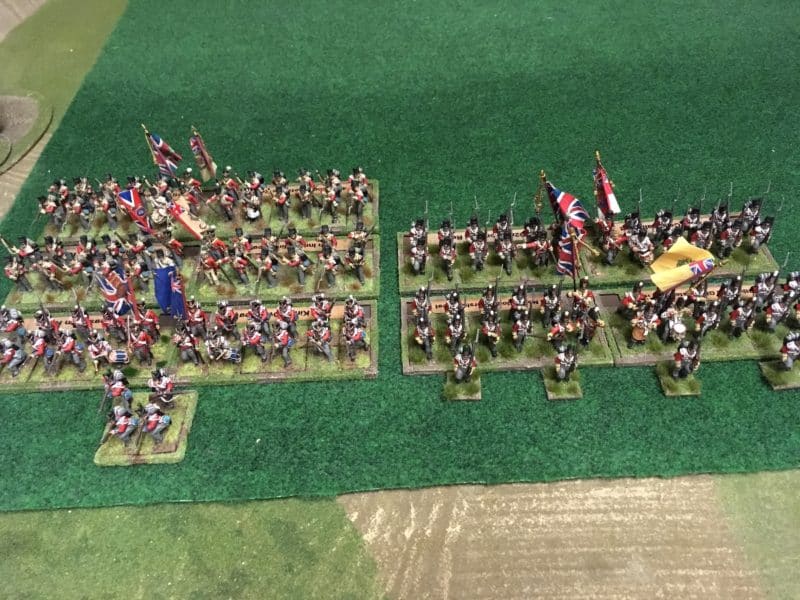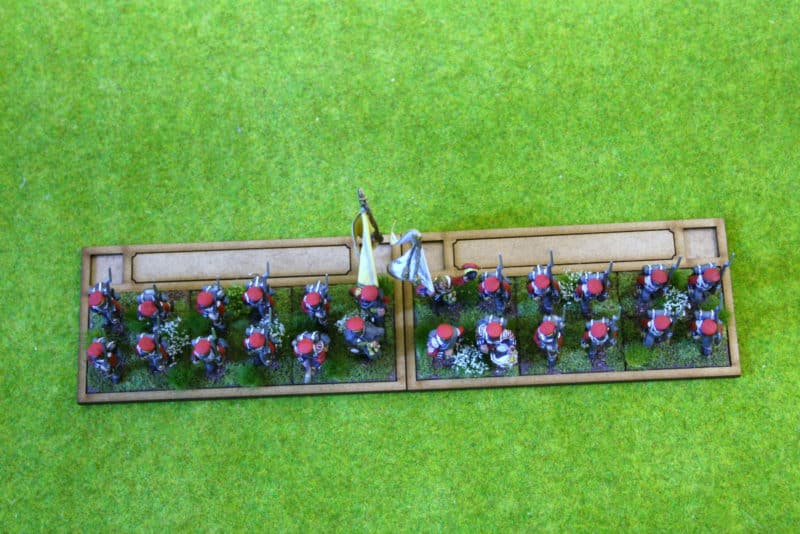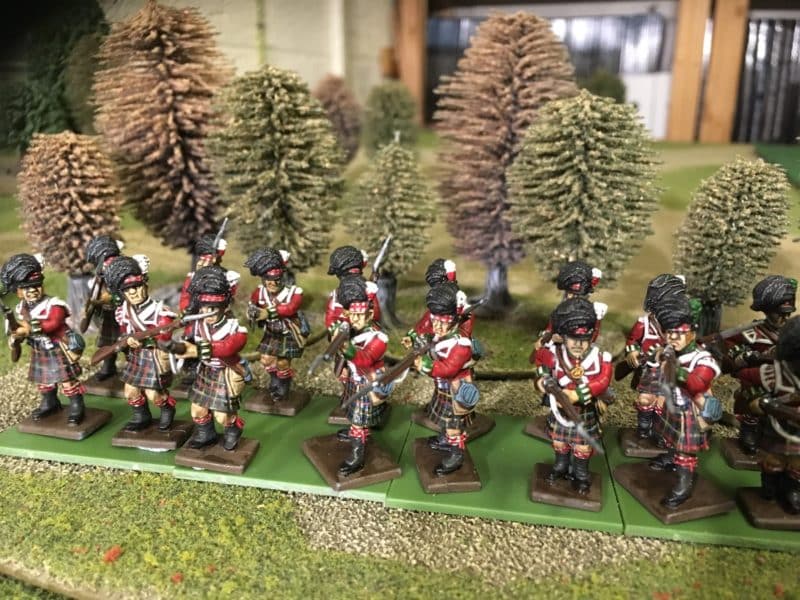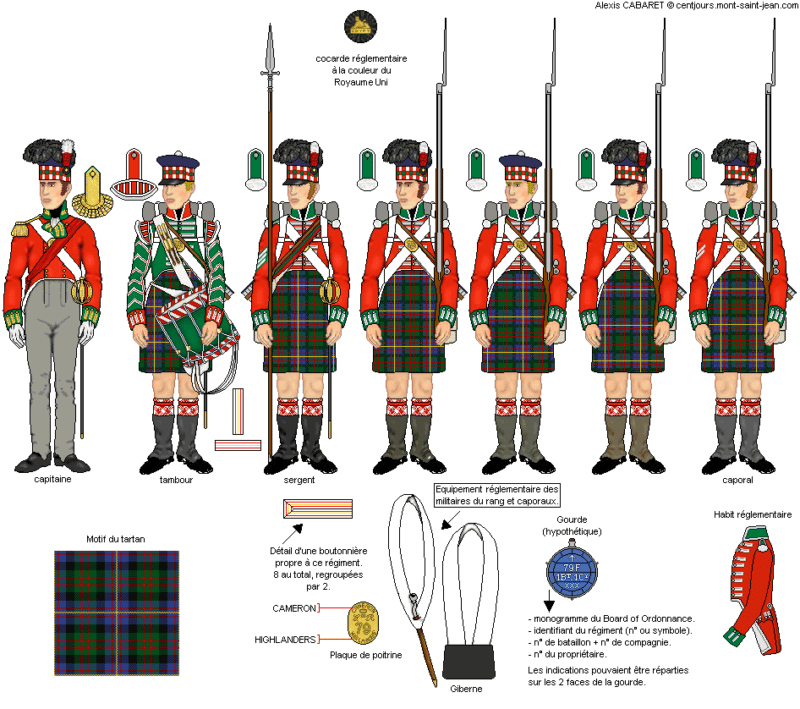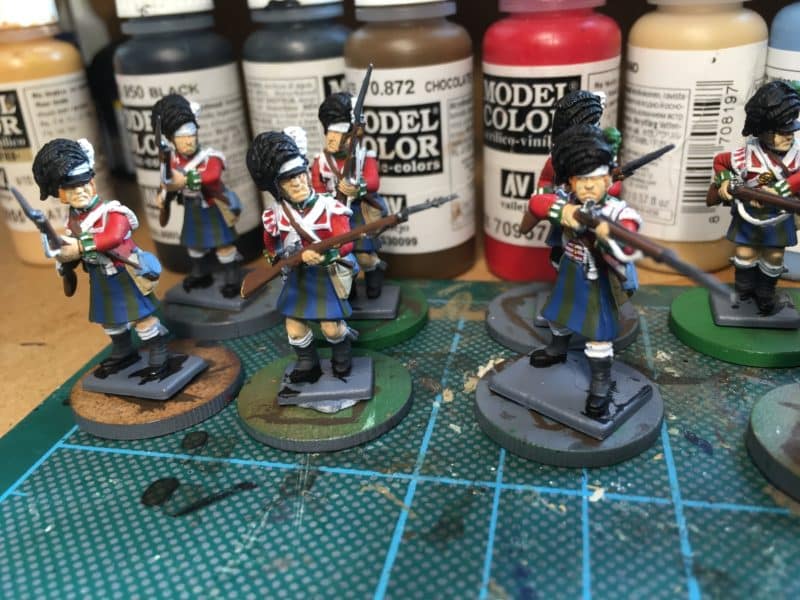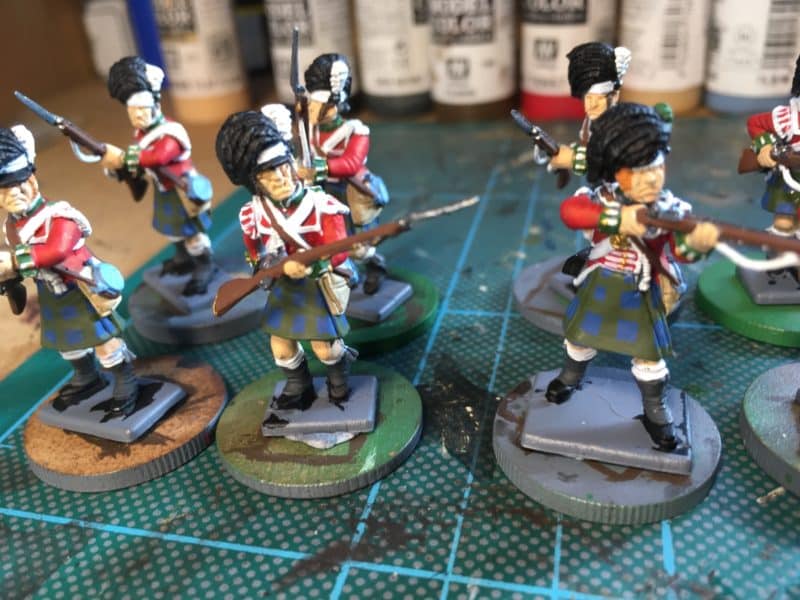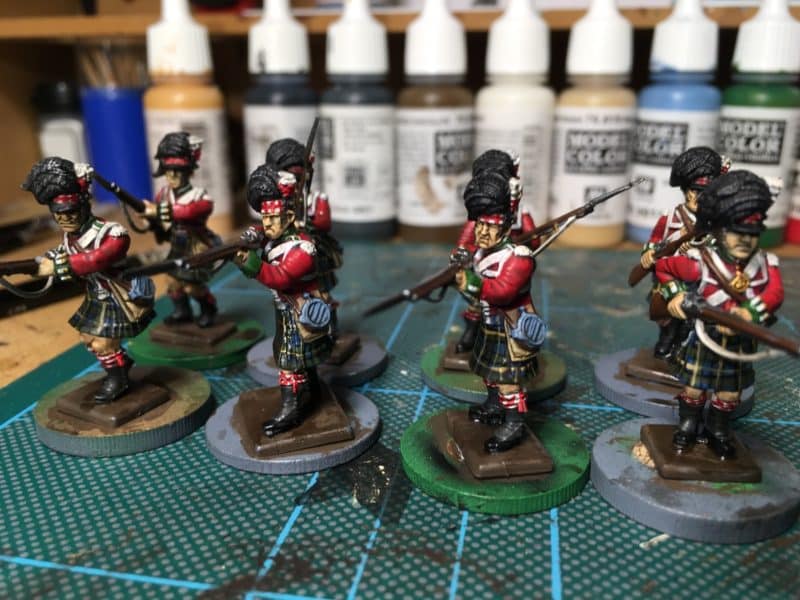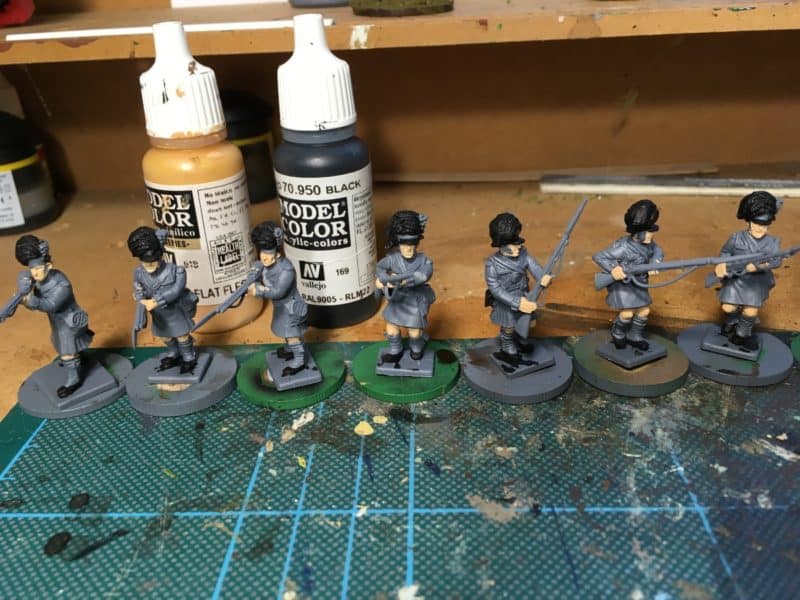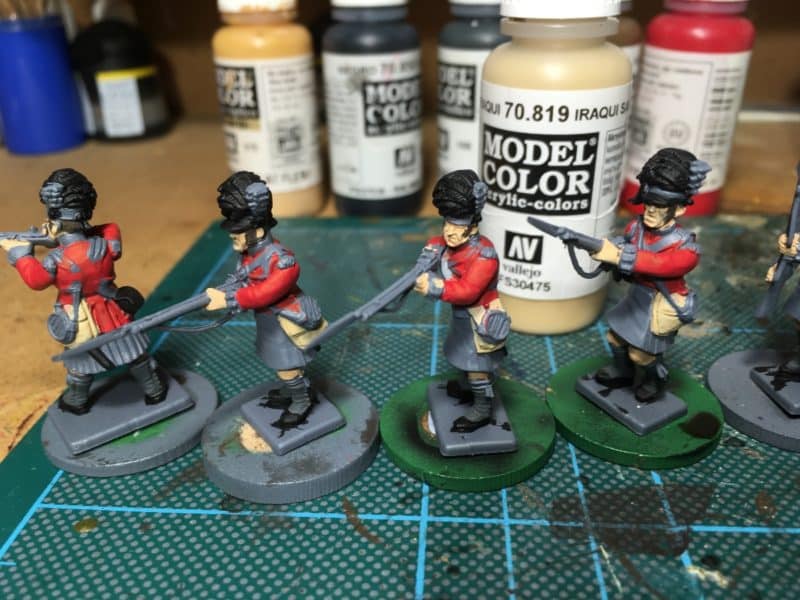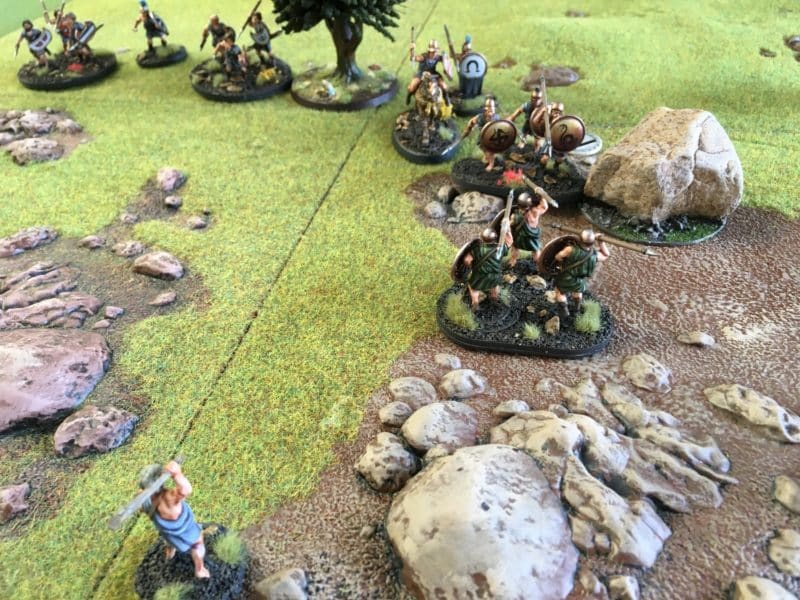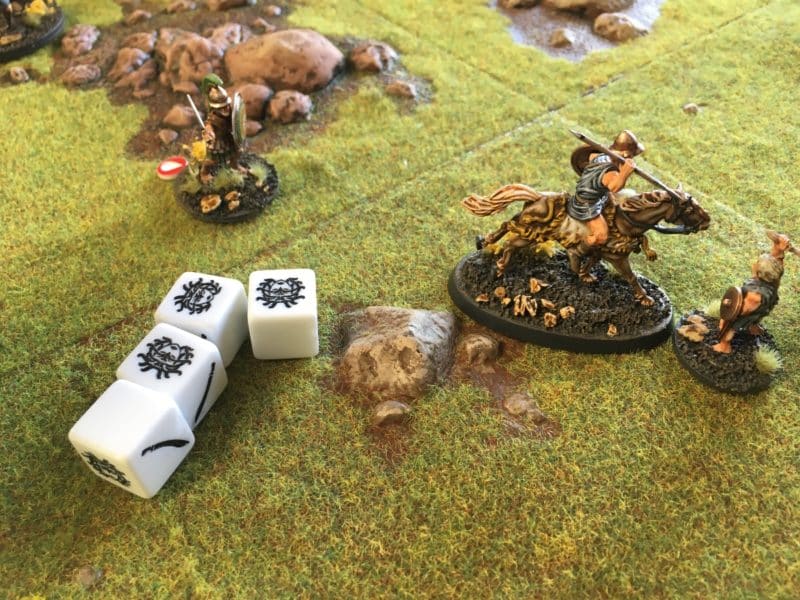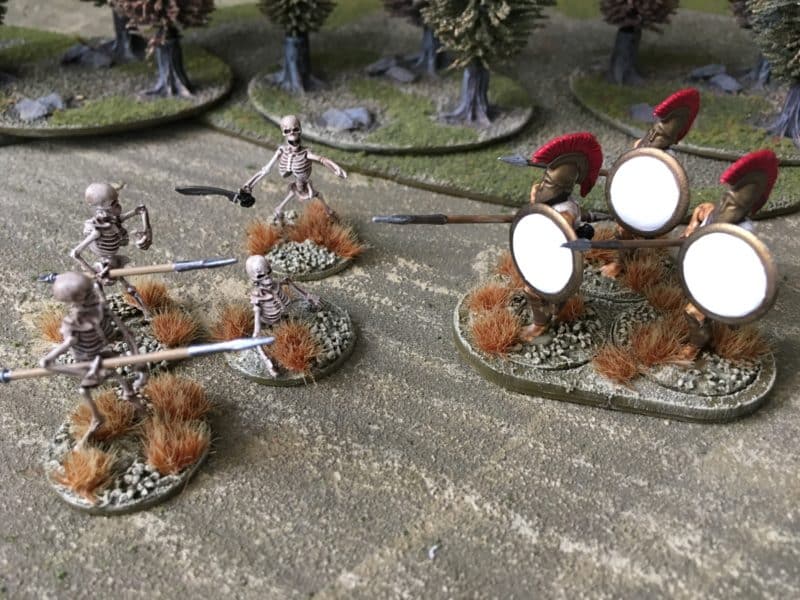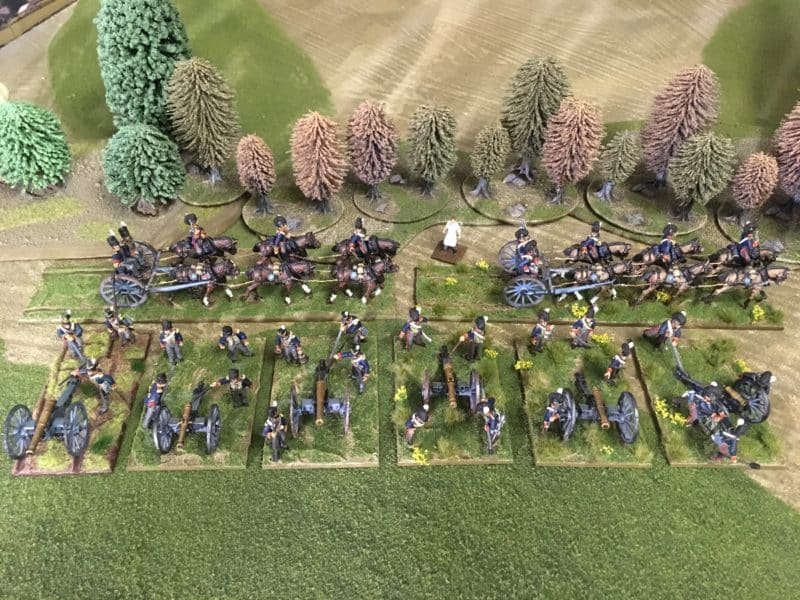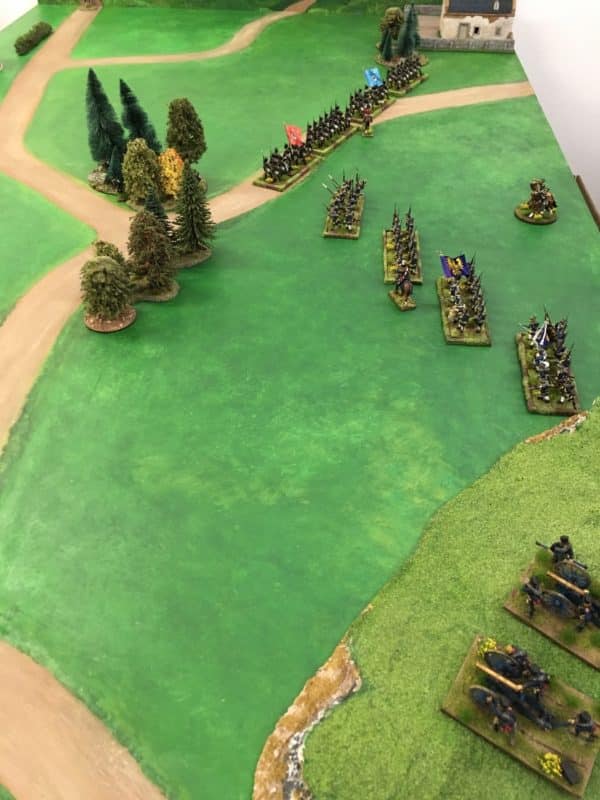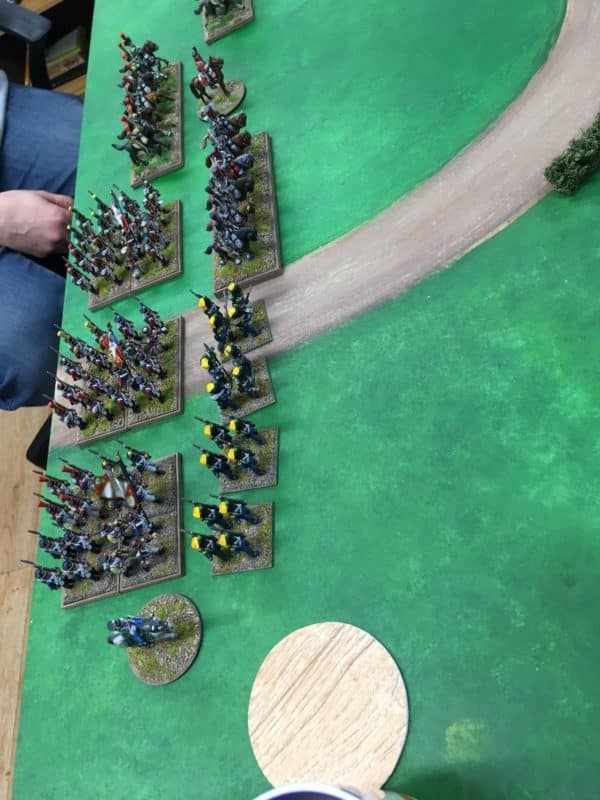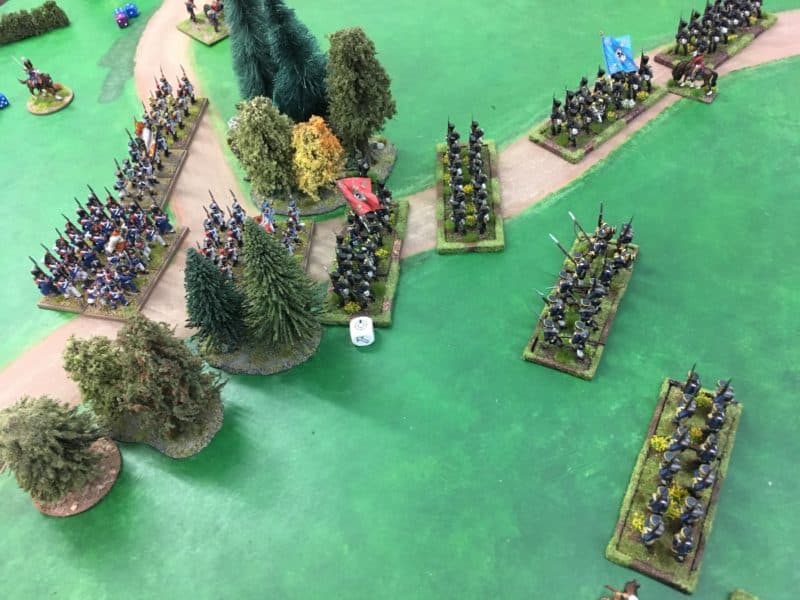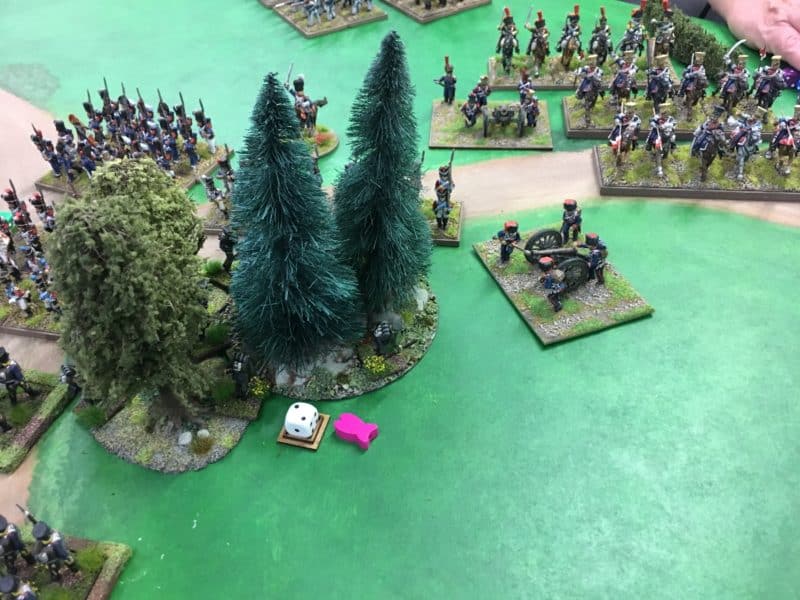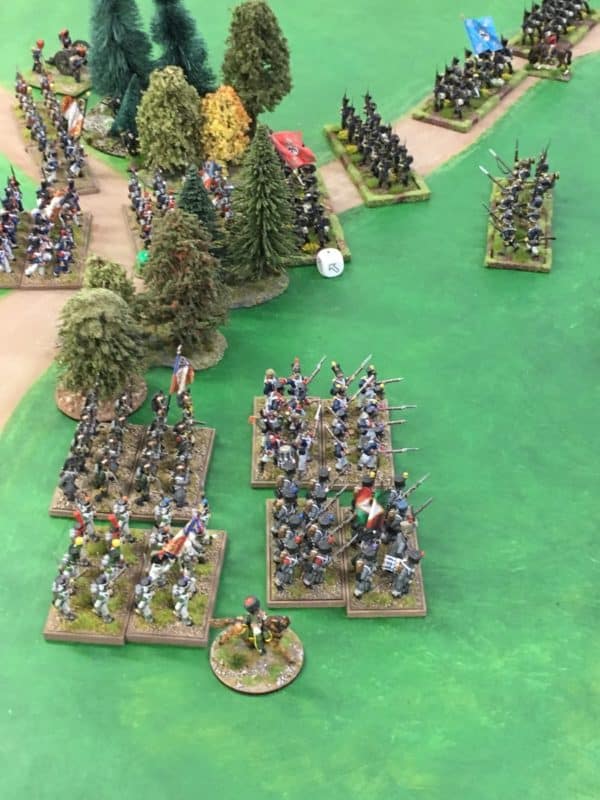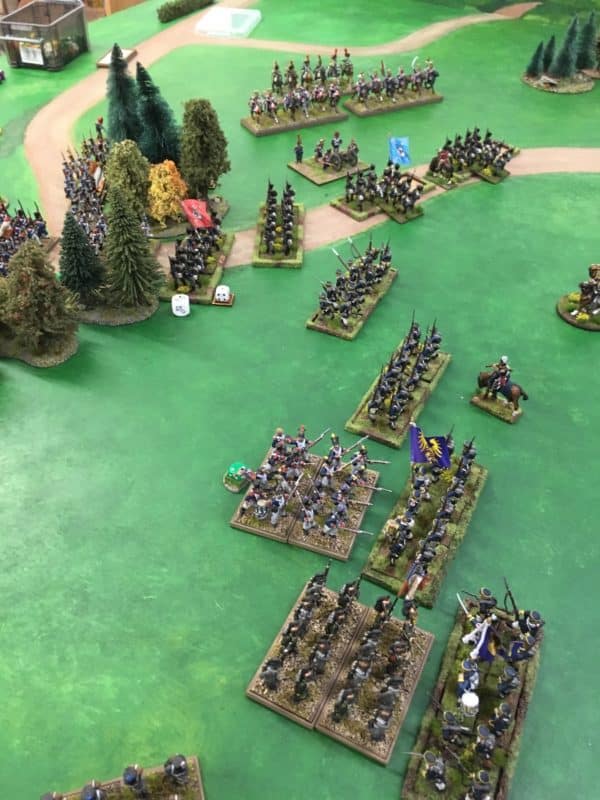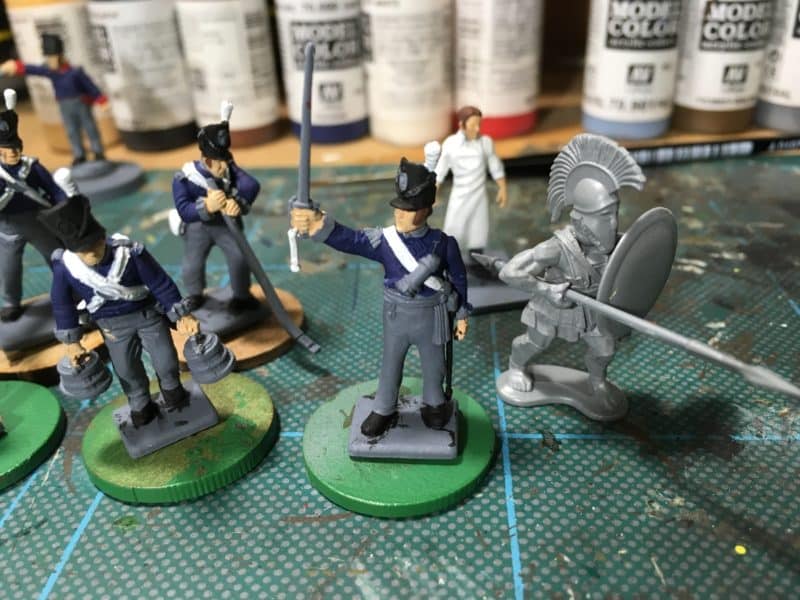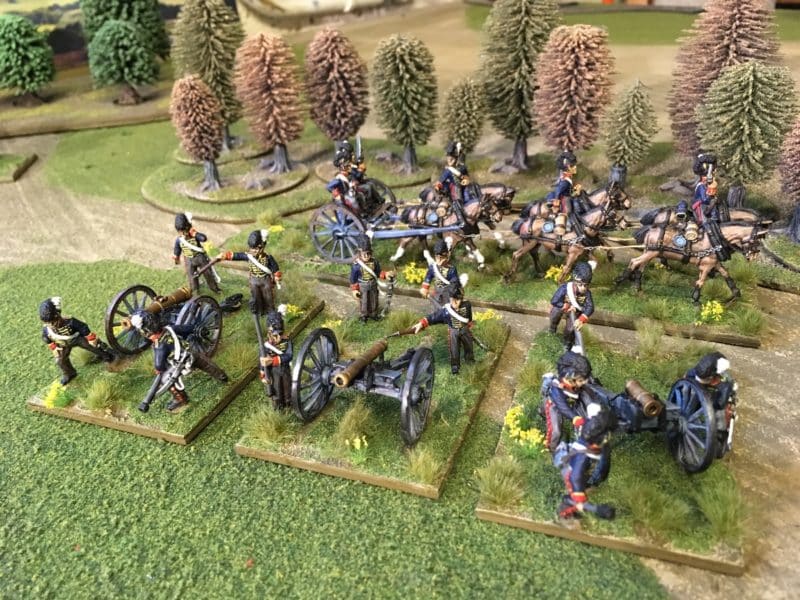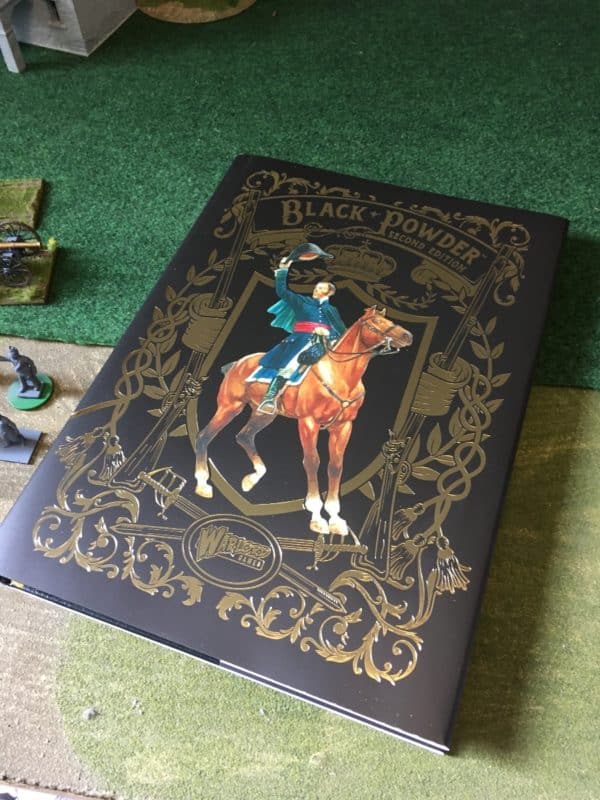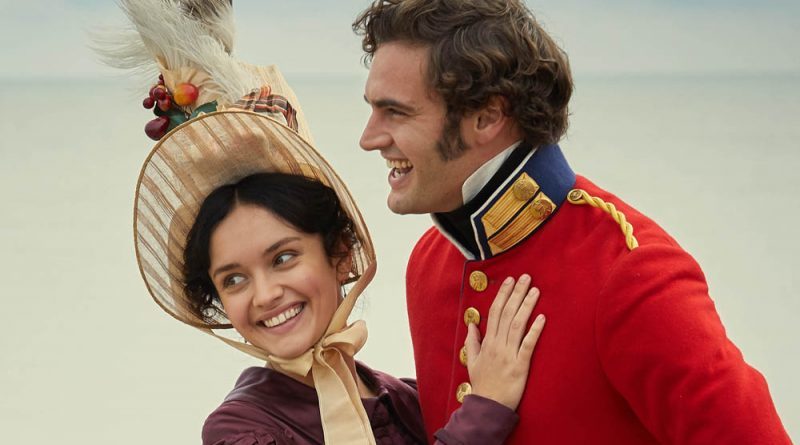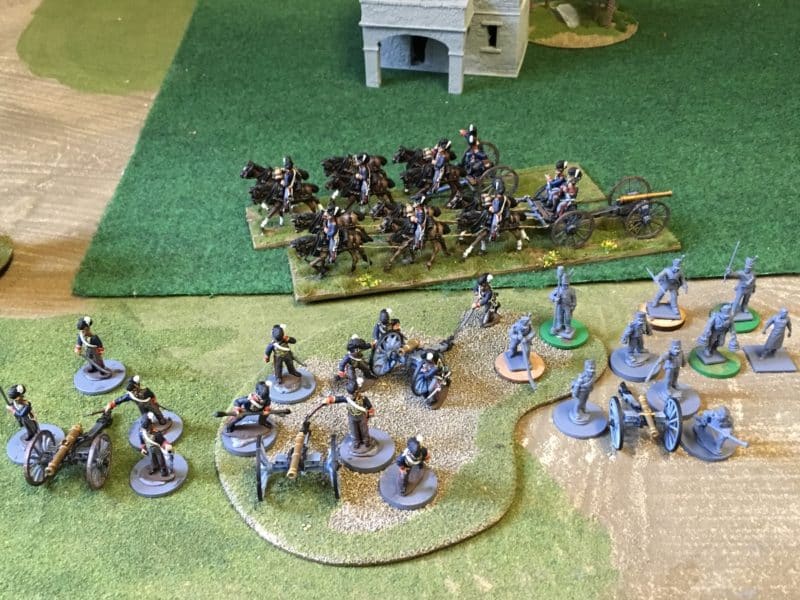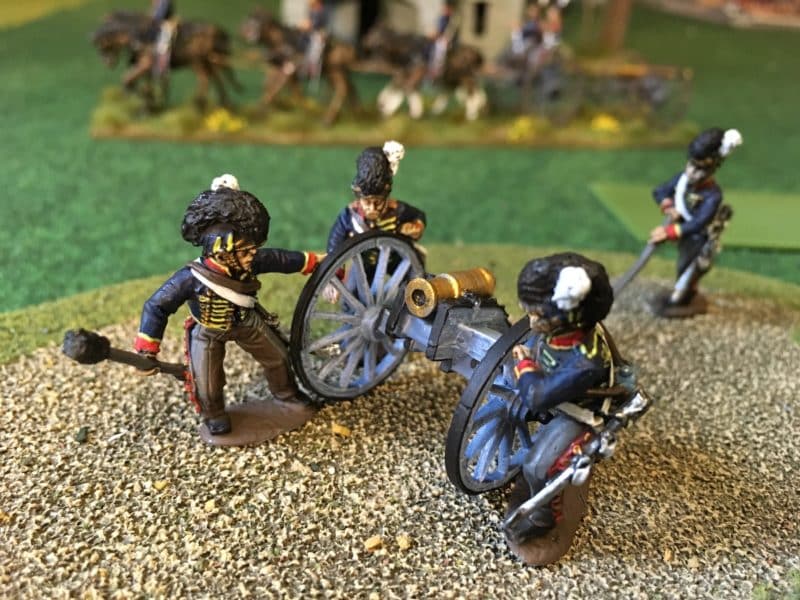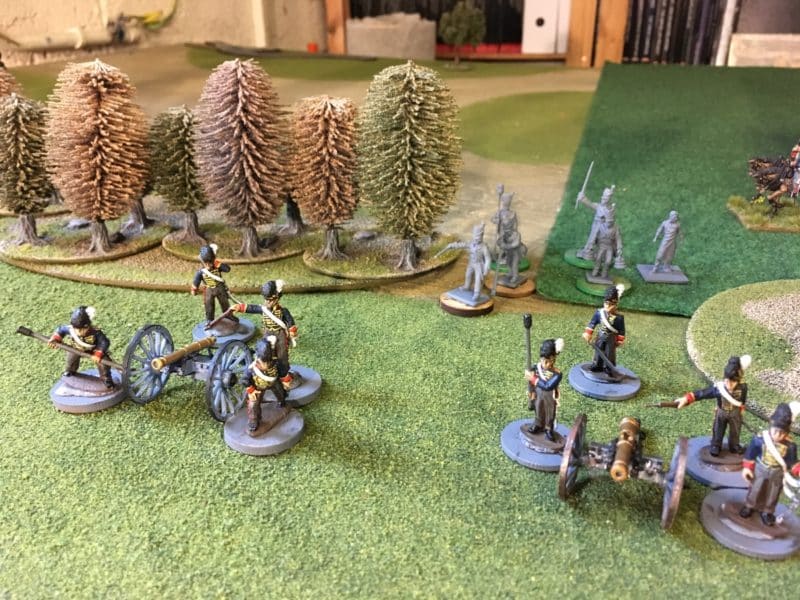
The 2/44th advance through the snow!
The ‘Old year’ has ended for me with a lesson that I have often experienced but have still yet to learn! When it comes to painting and modelling, if you rush you will make mistakes! I have been working on a really nice set of figures produced by Three Armies and unusually, they portrayed British infantry in Greatcoats. I was in no hurry to finish them until I had this brilliant idea of having them marching through the snow and using them as an Arcane Scenery Christmas card. As with all my Christmas preparation, I had left it a bit late but it seemed like a good idea and I knew just how I would execute it!
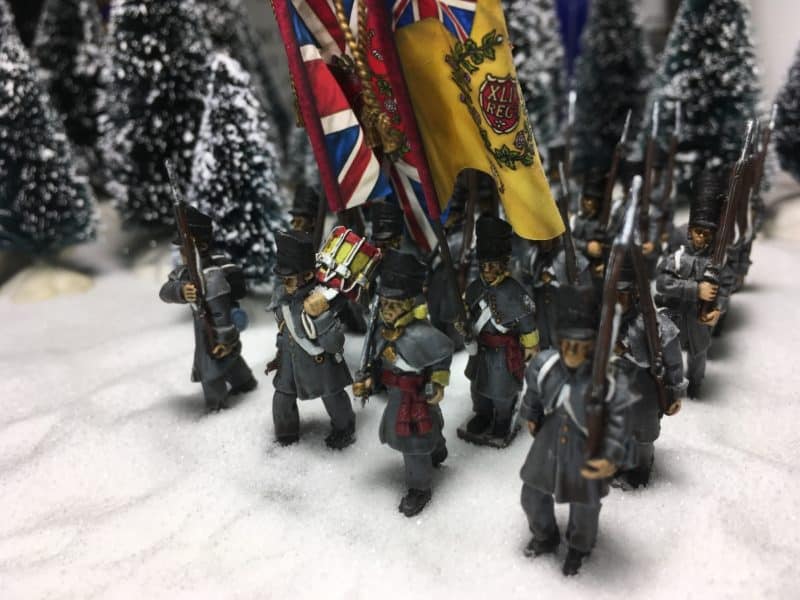
2/44th advance with colours on the correct side
My friend, Andy Callan had a job lot of snow covered trees – he had picked them up at a bargain price from a local garden centre last year – Andy is not only a very experienced war gamer but a canny bargain hunter! As the scene was going to be a temporary one, I needed a quick, cheap method of reproducing snow. Another of my Gaming buddies had the answer – use salt. So, a quick trip to Sainsburies and for 37p, I had all the snow that I would need.
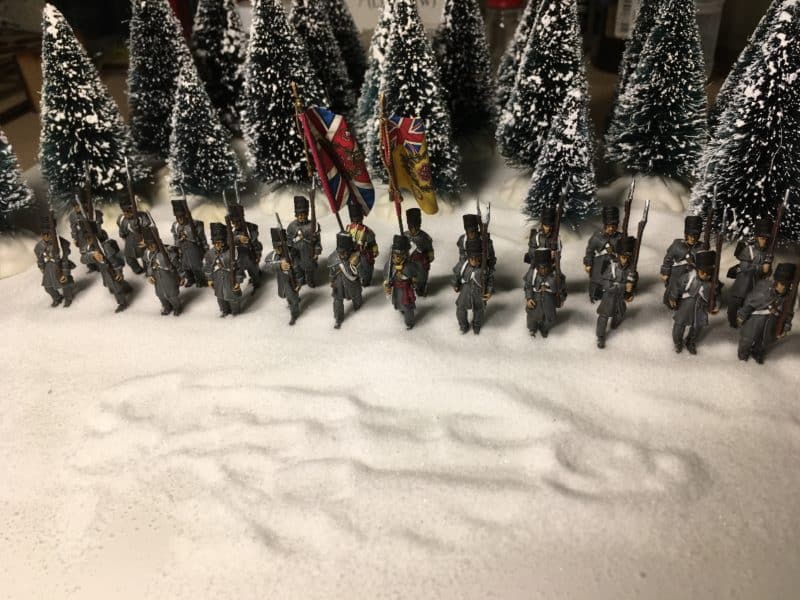
2/44th full batalion
I just had to temporarily base up the figures and add the flags and I was good to go!
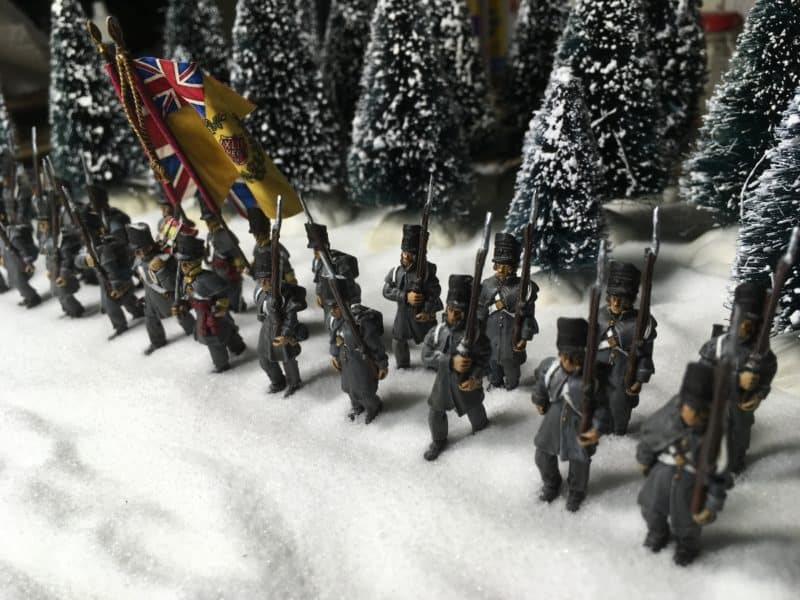
It’s cold out there!
I had already ordered the flags from GMB, my favourite flag supplier, but I had to make the flag poles. There are some supplied with the figures but these are just plain wire, lacking the finials. Fortunately, I had some spare and using the thinner wire spears that we sell, I knocked up the poles with finials and painted them. It was then that the problems started. I was trying to attach the flags rather late in the evening – well past 11.00pm and I should have known better and waited a day but time was running out! To make matters worse, the garage where I normally do my modelling was freezing, so while the missus was tucked up asleep in bed I moved operations to the nice warm kitchen. Of course, every time I wanted a tool or paint brush, I had to go back to my workbench. Instead of cutting the flags on my proper non slip cutting mat, I used the breadboard. So first of all, I managed to slip with the scalpel and steel rule and sliced the top of one side the regimental colour a bit short and at an angle!
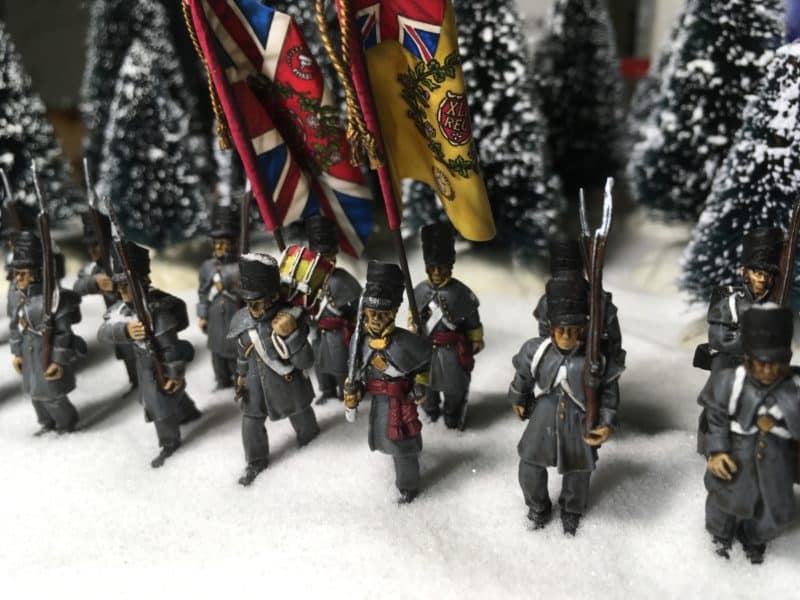
Colour party 2/44th
After some cursing, I managed a reasonable repair and with a bit of careful folding and a repaint job it looked OK. Next up, the Kings Colours, this time I was very careful and made a great job of cutting out. There was a bit of drama when I knocked the PVA over but it cleaned up OK and nobody saw it! I carefully fixed the Kings colour to the flag pole – perfect! Order was restored. I just needed to glue the poles to the figures and once everything was dry I would be ready to take the pictures the next day. Bugger! I had managed to glue the top of the super glue onto the bottle. Nothing that couldn’t be fixed – a pipe wrench and a pair of mole grips and I got the lid off. The fact that it would never go back on again is neither here nor there, I could super glue the flags on and get to bed. Job Done!

It was tough in Russia!
All was calm the next evening as I set up the photo shoot. I was quite pleased with the result and had some fun not only photographing my new Battalion, but also some Napoleonic Zombies that I had borrowed from Daz at Warbanner. I was so pleased with the result that I put the pictures up on Face book to get an opinion on which was the best picture to use. It was only at this point that it was pointed out that I had attached the Kings colours upside down…Bollocks!

YOU PUT THE FLAG ON UPSIDE DOWN!!!!
Ah well, lesson learnt. Again. I have managed to soak off the flag and re attach it the right way up but as you can imagine there has been a bit of damage and I will probably replace both flags the next time I order from GMB.
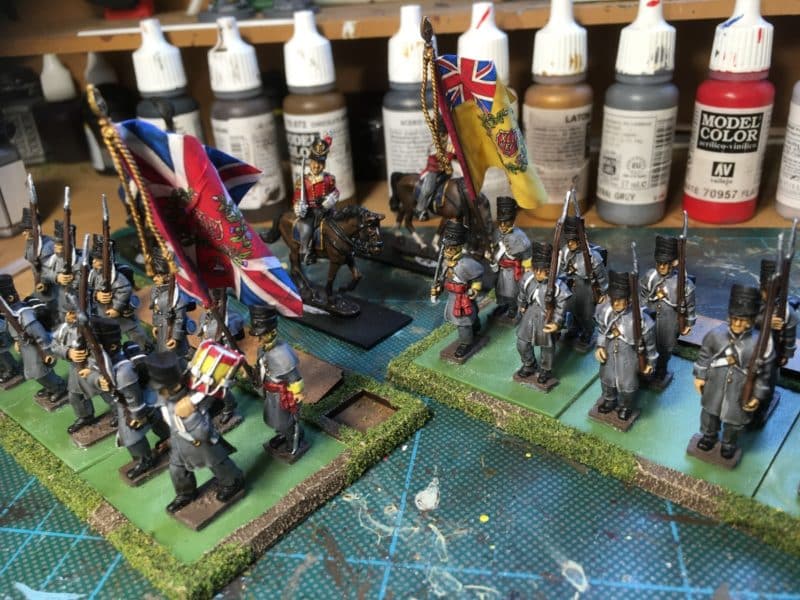
The flag is now the right way up! Just the permanent basing to do.
So, a cautionary tale and a lesson learnt again. My New Years resolution is now sorted – I’m going to stop worrying about how long it takes to complete a project and just enjoy what I am doing without rushing. In the mean time, Happy New Year! I hope that you have fun with your modelling!
THE COMMERCIAL BIT
Unusually for me, most of the stuff featured above isn’t available from Arcane Scenery but if you do need paints bases, glue, proper fake snow and a huge range of kits and wargaming figures, they are available post free to most world wide locations at the time of writing.
You can see the Three Armies range of figures here:
The fantastic range of GMB Flags can be seen here:
The salt is available from any decent Grocers but you do get nectar points at Sainsburys…..

